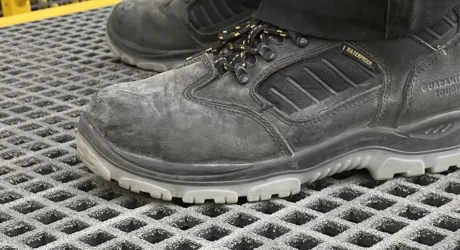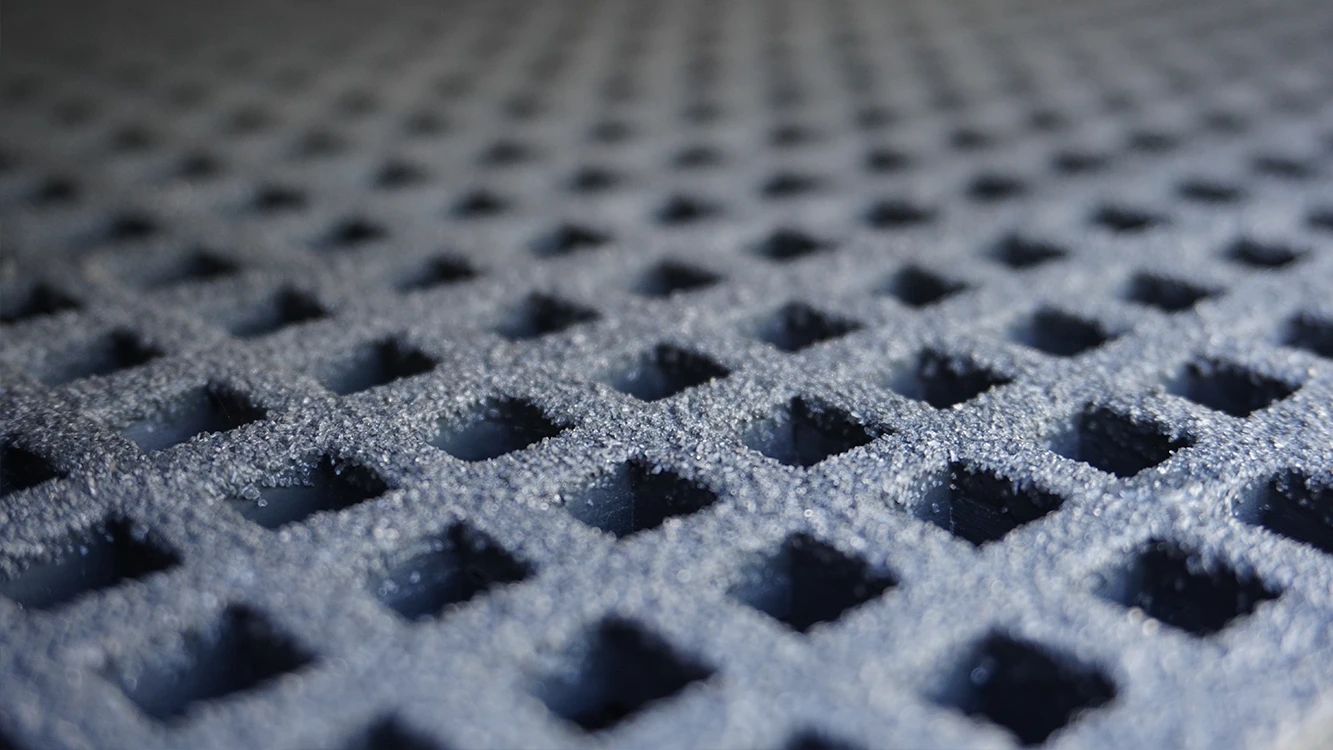At Dura Composites we pride ourselves on our rigorous testing regime and we make it our mission to provide the safest products on the market.
Did you know that slips and trips are the most common cause of injuries at work? The design and specification of floor surface materials often focuses on the aesthetics of the flooring material to be used. However, floor surface slipperiness is seldom considered, despite the high incidence of slip accidents. On average, slips are responsible for more than 33% of all major injuries and can lead to other types of accidents, such as falls from height or falls into machinery. When it comes to choosing the right industrial flooring product for your workers and site visitors or the end users of your facilities, it’s vital that you have an understanding of the considerations needed to prevent slip or trip accidents. Which is where we come in.
At Dura Composites we pride ourselves on our rigorous testing regime and we make it our mission to provide the safest products on the market. In commercial settings, making sure you choose the right flooring is essential for the safety of your staff, as well as any other visitors such as maintenance workers, customers and members of the public. Acquiring suitable anti-slip flooring is not just important for the wellbeing of those walk on it it, it’s also a way to prove to relevant authorities that you are providing a safe floor environment.
In the unfortunate event of injury related to the surface, it’s vital that you can prove that the flooring met safety standards in order to obtain legal protection. It can be simple to ensure you’ve chosen a safe, suitable floor type, as manufacturers can provide you with the material’s ratings. However, for those in facilities management, it’s important to have a deeper understanding of what standards qualify the flooring as safe, and what testing it has been through to reach this verdict. Look carefully at product descriptions to ensure they give a good indication of how the flooring will perform in its intended use and how it should be cleaned and maintained.
The Impact of Slips, Trips and Falls
According to the HSE (Health and Safety Executive, Britain’s national regulator for workplace health and safety), slips, trips and falls account for over a third of all non-fatal injuries to employees, the largest percentage of all injuries caused in the workplace. Accidents of this nature account for 20% of over 3-day injuries, costing employers a staggering £512m a year in lost production and other costs, as well as a cost to health services of £133m. Although not all slips, trips and falls can be avoided, there are appropriate steps to take in order to minimise the risk.
What to Consider When Selecting Flooring
The necessary considerations will vary depending on the nature of the business and the intended usage of the flooring; not all anti-slip floorings will be suited to every situation. It’s important to consider:
- Where the flooring will be fitted
- What type of work will be carried out on it
- The average pedestrian usage
- Load-bearing requirements
- The type and amount of contamination or spillages that likely end up on the flooring
- How durable the flooring needs to be in conjunction with the lifecycle of the project
- Your budget
- The environmental sustainability of the material
It’s imperative that the chosen flooring has undergone appropriate slip testing in accordance with key standards. The most reliable and robust method of measuring slip is the Pendulum test.
Pendulum Slip Test
The Pendulum slip test is designed to measure the friction offered by a floor surface. The test is carried out by swinging a prepared rubber slider on a mechanical ‘foot’ across the surface. The ‘foot’ makes contact with the surface along a set distance, in a controlled manner, slowing according to the level of resistance. The Pendulum slip test is recognised by HSE as a suitably reliable test, subject to a British Standard, BS 7976-2:2002+A1:2013. The results of the Pendulum slip test are displayed as Pendulum Test Value (PTV) numbers. The PTV assigned to each material will fall into one of three risk categories: Low (36+), Moderate (25-35), and High (0-24). It’s important to remember that some materials with a low slip risk when dry may become more dangerous once wet. The Pendulum slip test can be carried out on both dry and wet surfaces, and if the flooring will be located in an area that is subject to regularly getting wet, it’s key to check the wet PTV as well as the dry.
Selecting the Ideal Flooring
Although ensuring that your flooring meets certain requirements is of utmost importance, it can also be easy to overspend on flooring in an attempt to secure the strongest performance for areas that don’t necessarily require that level of protection. For example, access walkways that see a high level of footfall every day will require a material with a higher PTV, in comparison to flooring that is only ever accessed by a small number of staff which may therefore require a much smaller PTV. Some areas have a higher risk than others, such as uneven flooring or stairs, requiring a higher PTV. Be wary of suppliers who only present their dry PTV results.
HSE states that ninety percent of slips occur when the floor is wet or contaminated, so ensuring your chosen anti-slip flooring is equally as safe in wet conditions is vital. The manufacturer should be able to provide you with evidence of adequate slip resistance testing, travelling in all directions and in both wet and dry conditions. Choosing suitable flooring for your buildings is essential for protecting the safety of everybody within the premises, as well as providing protection for the company against lost working time and potential legal costs.



